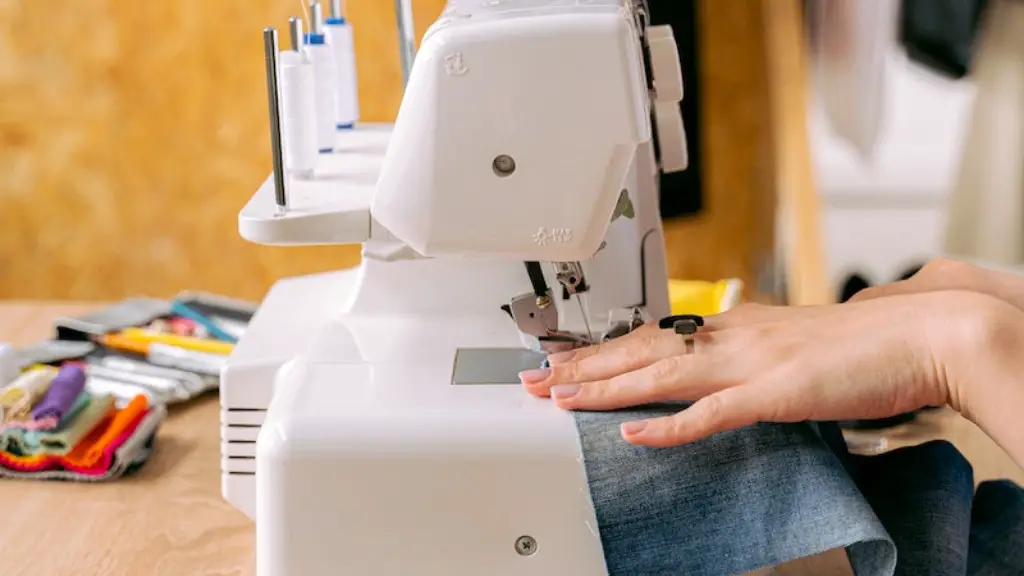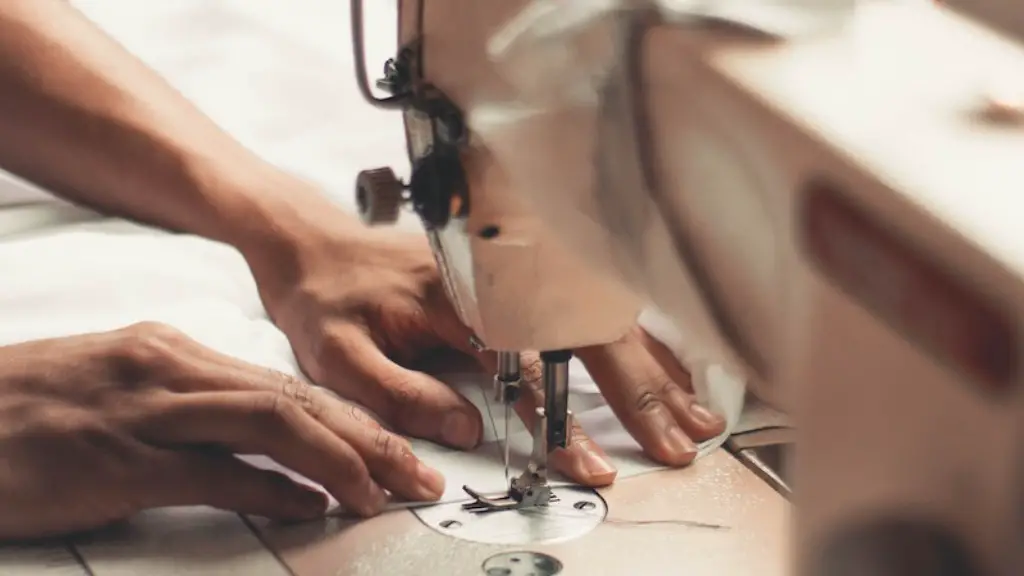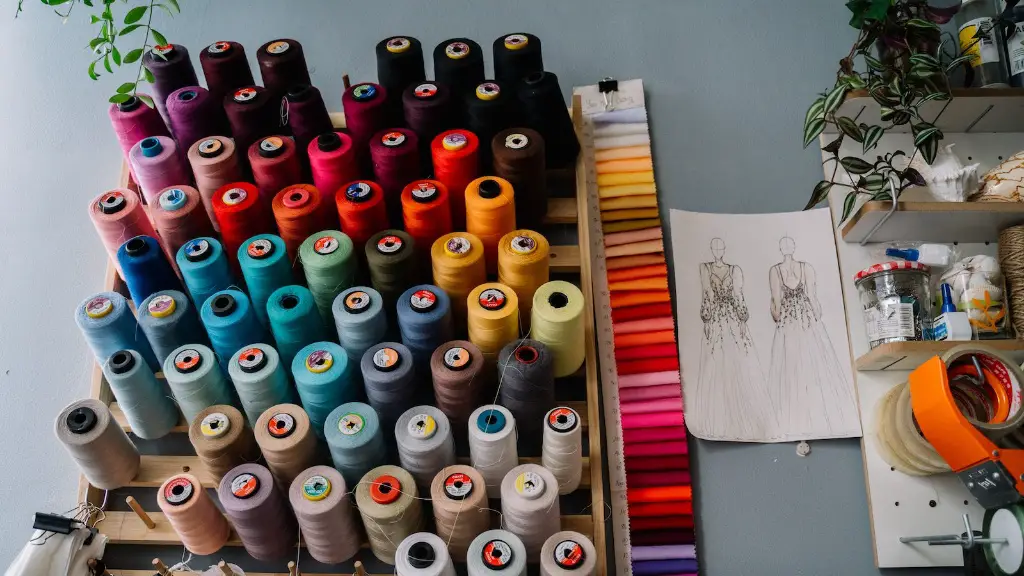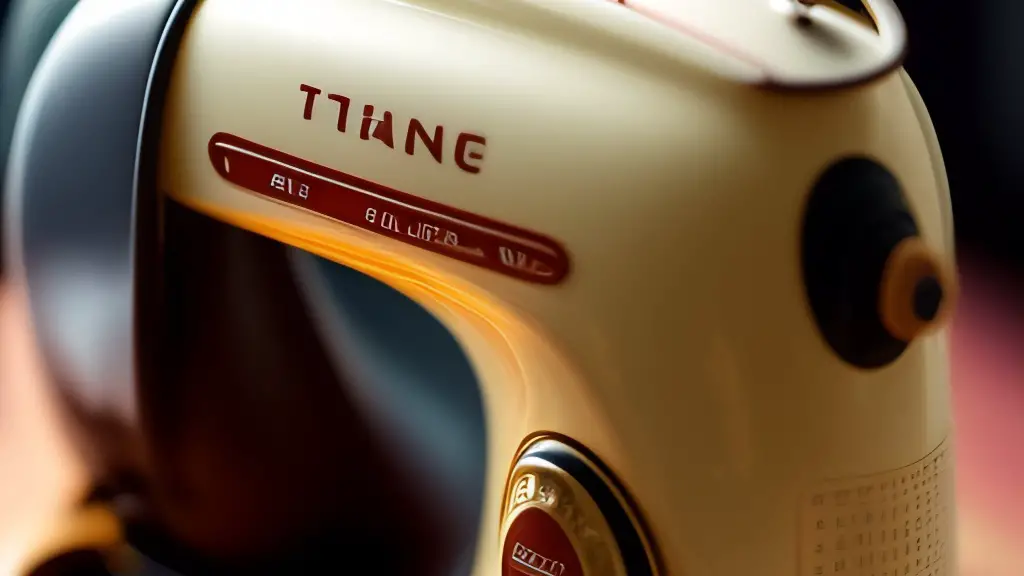Understanding the Tension Setting
Sewing machines are amazing tools for the creative. But if you’ve ever had your stitches jamming and sticking or consistently breaking, then you know the importance of adjusting the tension on your sewing machine. Knowing how to adjust the tension means you’ll have more control over the quality of your projects.
To understand how tension works, it’s important to understand the anatomy of your machine. The needle and presser foot are where the needle bar meets the needle plate when it travels up and down. The bobbin thread is wound on the bobbin case, and the shuttle hook grabs the thread from the case and moves it as the needle moves up and down. If the tension isn’t at the right balance, then the top and bottom threads won’t loop around each other and will instead weave in and out.
Balance the Tension Setting
The key to mastering this skill is to balance the tension setting. When the tension setting is correct, the threads will lock together nicely and become invisible when the fabric is turned over. To balance the tension setting, you need to take a few simple steps.
Start by changing the needle. You should use a fresh needle that’s the right size for the fabric and thread you’re using. Make sure the needle is inserted correctly, with the flat side of the needle facing the back of the presser foot.
Set the tension dial to between 4 and 5 in the middle. As you’re sewing, you should check the tension and try different settings to see which gives you the best results. The tension should be even on both the bobbin thread and the needle thread.
Check the Bobbin Tension
You should also check the bobbin tension. Take out the bobbin and thread to ensure that the tension spring is not too tight or too loose. The spring should hold the bobbin thread in place but it shouldn’t be too stiff.
If you’re having difficulty adjusting the tension setting, it may be because the thread is jammed in the thread guides. If this happens, take the machine apart and check the thread guides. Ensure that the thread isn’t stuck in the guides and the tension is properly set.
Finally, use the right type of thread. Make sure the thread is good quality, strong and suited to the fabric, and that it doesn’t have any knots or tangles.
Clean the Machine
It’s also important to keep your machine clean and lubricated. A clean machine is a happy machine and you’ll be able to find the causes of any problems a lot more quickly. A regular cleaning schedule will help you keep your machine in good working order.
If your machine has been sitting for a while, it’s worth doing a thorough cleaning before using it again. Make sure to clean the needle and bobbins, lubricate the parts, and check that all the moving parts are still in good condition.
Helpful Tips
While learning to adjust the tension setting on your sewing machine, it’s helpful to have a few tips in mind. One is to keep practising and understanding the different parts of the machine. You’ll find that the more you practise, the easier it will become.
It also helps to have an extra bobbin or two on hand so you can easily switch it out when needed. This will save you time and prevent jams. And it’s always a good idea to test your stitches on a scrap piece of fabric before using it on your project.
Adjust Machine Settings
Finally, don’t be afraid to experiment and adjust the machine settings as needed. Different fabrics and threads will require different tensions. If you’re using a straight stitch, for example, you may need to use a slightly lower tension setting than if you were using an zig zag stitch.
It’s important to take the time to find the right tension setting for the fabric and thread you’re using. Once you learn this skill, you’ll be able to get the perfect stitch every time.
Experiment with Different Needles
When adjusting the tension setting on your sewing machine, it also helps to experiment with different needles. Different needle sizes and shapes may work better to achieve the desired results. For example, a sharp needle will cut through the fabric more easily and will be better for heavier fabrics while a ballpoint needle is best for thinner fabrics.
It also helps to have several different kinds of needles on hand to accommodate different projects. If a certain needle isn’t working, you can easily switch it out for one that does. This can save you a lot of time and frustration.
Sewing Helplines
If all else fails, don’t be afraid to ask for help. Chances are there’s a helpful woman or man at your local fabric shop who can help you solve the mystery of sewing machine tension. Or join a sewing forum online and ask other sewers for advice.
Getting the tension setting just right can take time and practice. As with any new skill, it takes time to master and the more you practise, the easier it will become. With patience and the right tools and tips, you’ll be on your way to perfecting tension setting on your sewing machine.
Understand Fabrics and Threads
To get the most out of your sewing machine, it’s important to understand the different types of fabrics and threads. Depending on the type of fabric and thread you’re using, you may need to adjust the tension setting. For example, if you’re using a lightweight fabric, you may need to use a higher tension setting to prevent skipped stitches. Likewise, if you’re using a thicker thread, you may need a lower tension setting to prevent jams.
The tension setting should be adjusted for the type of stitch you’re using as well. For example, a zig zag stitch requires a different tension setting from a straight stitch. Knowing how to adjust the tension setting for different fabrics and threads will give you more control over the quality of your projects.
Learn Thread Tension Basics
When it comes to adjusting the tension setting on your sewing machine, it helps to have a basic understanding of thread tension. Thread tension is the way in which the threads interact with each other while they’re being sewn. If the threads are too loose, the stitches will be sloppy and the fabric won’t hold up over time. If the tension is too tight, the stitches won’t be even and the fabric won’t move smoothly under the presser foot.
The tension setting should be adjusted by testing on a scrap piece of fabric and adjusting as needed. Once you’ve got the tension setting just right, you’re ready to start sewing and creating beautiful projects.
Check the Thread Paths and Guides
Adjusting the tension setting on your sewing machine can also be tricky if the thread paths and guides are clogged up. It can be difficult to get the tension setting just right when the thread isn’t running smoothly. To avoid this problem, make sure to keep the thread paths and guides clean and free of lint and dust.
clean the thread paths and guides regularly with a brush or a cloth and you’ll be able to get the tension setting just right every time.
Adjust the Height of the Presser Foot
Finally, it’s essential to adjust the height of the presser foot. If the presser foot is too low, the tension could be off when you’re sewing. On the other hand, if the presser foot is too high, then the fabric won’t be able to move freely.
The presser foot should be at a height where it’s not causing resistance but not so low that it’s dragging the fabric. Make sure to check the presser foot height regularly and adjust as needed to get the perfect tension settings.



